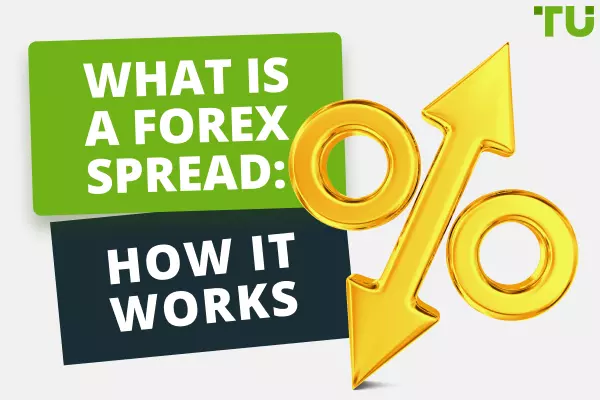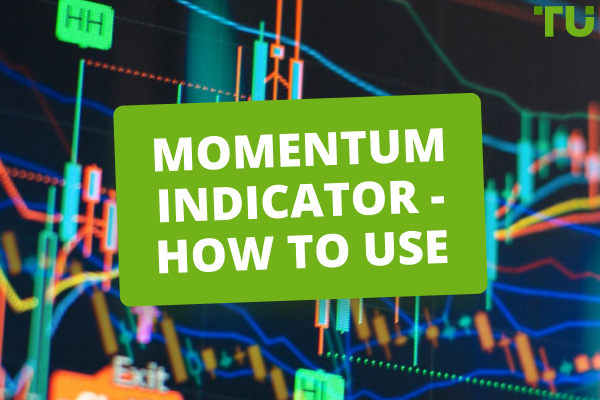Top Forex risk management strategies and rules to learn
One of the essential keys to being a successful, consistently profitable Forex trader is Forex risk management. The unfortunate truth is that most Forex traders lose money in large part due to their failure to practice good risk management in Forex trading.
The Forex market offers traders a number of very appealing advantages. The advantages include a highly liquid market that trades 24/7 on five days a week, high amounts of leverage available, low trading costs, and no restrictions on short selling. Individual retail traders have the opportunity to generate large profits through Forex trading.
However, the high potential profits come with correspondingly high potential losses. No trader has a 100% winning trade rate. Losing trades are part of the trading game.
You can’t avoid ever having a losing trade, but you can minimize any losses by always operating with a solid Forex risk management plan. Developing and abiding by a good risk management plan can help you maximize your net profitability from trading and avoid the common trading mistakes that wipe out so many Forex traders.
What is Forex risk management?
Forex risk management comprises all the trading tools and techniques that a trader uses to maximize trading profits and minimize trading losses. A comprehensive risk management plan covers every aspect of trading – how you enter and exit trades, using leverage, and position sizing.
Practicing good risk management in Forex trading is what distinguishes successful speculators from mere gamblers. The fact that even a novice trader can enter the Forex market and – thanks largely to the high amount of trading leverage available – realize a large profit in just a matter of seconds, unfortunately, leads many Forex traders to act like gamblers placing random bets at a roulette wheel. They enter trades without a good strategic reason to do so, risk far too much money, and have no idea of when they should close a trade and take profits.
Forex Risks Investors Should ConsiderTypes of Forex trading risk
Most novice Forex traders aren’t even aware of all the different types of risk that successful traders have to consider. It’s dangerous to be in a market position, unaware that you’re surrounded by potential risks.
Let’s take a look at the different types of Forex risk that traders need to consider.
Top 10 Effective Forex Trading StrategiesMarket risk
Market risk is the most basic trading risk – the risk that a currency pair’s price movement won’t be what your analysis projects and what’s necessary for your trade to be profitable. Sometimes, you’re just flat out wrong about the market’s most probable future price action. Therefore, you should never enter a trade without considering, “What if I’m wrong?”, and how to best contain your risk exposure.
Interest rate risk
The prevailing interest rates in a country are a primary determining factor in the value of the country’s currency relative to other currencies. Absent other, strong contrary factors, the currency of a nation offering 5% interest on deposit accounts will rise in value relative to the currency of a nation only offering 3% interest. A major interest rate change can affect a trade.
Political risk
Because the Forex market is an international market and one that has a substantial impact on international trade, Forex trading is also subject to political risks. First, political uncertainty or instability in a country usually has a negative impact on its currency’s value. Second, sometimes a country will intentionally devalue its currency in order to improve its import/export balance of trade.
Liquidity risk
Liquidity risk refers to the risk that a trader won’t be able to easily exit a trading position in the event that the market turns against him. If the market isn’t sufficiently liquid, then a trader may have to sacrifice a large part of open profit in a trade in order to exit the trade before it turns into a loss. Worse yet, he may not be able to exit his trade before it suffers a substantial loss.
Generally speaking, the Forex market is the most liquid trading market in the world. However, that doesn’t mean that it has no liquidity risk at all. Sudden unexpected economic events can cause a lack of liquidity in a currency pair. Even in normal trading conditions, some currency pairs are much less liquid than others. For example, the US dollar versus the South African rand carries only a small fraction of the liquidity that exists in trading EUR/USD or GBP/USD.
There are also times of day when the market is much less liquid - typically between the New York close and the Tokyo open.
Leverage risk
Many Forex traders use high amounts of leverage, holding trading positions whose value is, in fact, much greater than the total amount of trading capital in their trading account. We’ll discuss the risk posed by the two-edged sword of leverage in a separate section of this article.
Risk of ruin
The “risk of ruin” refers to the all too common occurrence in Forex trading of a trader losing all of the money in their trading account. The simple fact is that most Forex traders, especially beginning traders with little experience, are much too optimistic about their prospects for trading success. They fail to factor in, and plan for, the very real possibility of, for example, having 10 or more losing trades in a row.
Many veteran traders will tell you that all you really need to do to be a successful Forex trader is not run out of money to trade with. Unfortunately, the sad story of many traders is that of watching a golden trading opportunity pass them by, simply because they didn’t have any trading capital left.
Types of hedging strategiesBest Forex risk management strategies and rules
How can a Forex trader smartly manage all the risks inherent in Forex trading? – The answer is pretty simple: Always practice firm risk management strategies as part of your overall Forex trading strategy. A comprehensive set of risk management trading rules will include all of the following elements:
Get a good Forex trading education
Before you ever enter your first Forex trade, you should first educate yourself on the Forex market and the primary forces that drive its price action. There are plenty of free Forex trader educational resources available online. One of the best is BabyPips.com. Also, the Top Forex brokers usually have extensive libraries of educational resources, freely available to their clients.
Top 8 Forex Trading CoursesTrade with a clear trading strategy
Don’t go buying GBP/USD just because you kind of think it might go up, or because you’d like it to go up. You can significantly lower your trading risk if all of your trading moves are guided by a clear trading strategy that has firm rules for both entering and exiting trades. Knowing precisely when, or at what price level, you will close out a trade – whether taking profits or cutting losses – will help keep you from making one of the cardinal trading mistakes, that of making trading decisions based on emotions such as fear or greed, rather than on rational reason.
There are an infinite number of trading strategies to choose from – both technical and fundamental. Find one that has clear entry and exit rules, and that matches your risk tolerance and personal trading style.
Best Trading StrategiesTrade with a favorable risk/reward ratio
An excellent rule of thumb in Forex trading is to never enter a trade that doesn’t offer a favorable risk/reward ratio – at least 2:1. That is, don’t enter a trading position unless the potential profit you realistically envision is at least twice the amount of money that you risk by putting on the trade.
Example: Assume that EUR/USD is trading at 1.1250, Your trading strategy projects a potential move up to 1.1300. However, the pair may first decline to test the 1.1200 level before heading higher. Entering a buy trade at 1.1250 would not give you a favorable risk/reward ratio, because you’re risking just as much – 50 pips – as you hope to make. However, if your strategy showed a possible decline to only 1.1225, then you would be trading with a favorable ratio – risking only 25 pips, with the aim of making 50 pips.
Always use stop-loss orders to limit your risk
A stop-loss order is a pending conditional order to close a trade if market price action moves against your trading position to a specified price level. For example, you might enter a buy trade in EUR/USD at 1.1250 and place a stop-loss sell order at 1.1225. If the price of EUR/USD declines to 1.1225 or less, then your stop-loss order will automatically be triggered and your trade closed out.
You can use stop-loss orders to help limit the size of losses when a trade doesn’t work out. You can also use them to help protect profits in an open trade. Assume you buy EUR/USD at 1.1250. The market subsequently moved up to 1.1330. You might place a protective stop-loss order at 1.1290, thus locking in half of your existing open profit of 80 pips.
Be aware that stop-loss orders don’t provide perfect protection. Some events may cause the trading price of currency pairs to suddenly gap up or down by a wide margin. In that event, your stop-loss order may be triggered, but filled at a significantly less favorable price.
Never trade with money you can’t afford to lose
The old saying is “don’t bet the rent money”. You should never invest in Forex or any other financial market with money that you can’t afford to lose – that would affect your ability to cover your regular living expenses. Only and always trade with “extra” money that you have set aside specifically for investing – and that, even if you lost it all, wouldn’t impact your standard of living. If the amount of money you’re risking in a trade is interfering with your ability to sleep peacefully at night, then you’re risking too much money.
Be aware of correlations
Currency pairs that are highly correlated tend to move in the same direction and, often, at approximately the same rate. For example, the currency pairs EUR/USD and GBP/USD nearly always move more or less in tandem. Therefore, if you initiate a long position in both pairs, then you’re essentially just adopting the same trade position – a position against USD – twice.
You should also be wary of trading two currency pairs that have a high negative correlation – that tend to always move in opposite directions. For example, if you buy both GBP/USD and USD/CHF, making one trade largely against USD and one trade largely for USD, then you’re basically holding two market positions that pretty much cancel each other.
It's also good practice to be mindful of correlations with financial assets outside of the Forex market. The relative value of the Australian dollar usually has a positive correlation with the price of gold. Therefore, if your market analysis projects a decline in gold prices, you might well consider reducing any risk exposure you have in AUD currency pairs.
Best Currency Pairs To Trade ForexPay attention to position sizing
You can keep your overall trading risk at a low, acceptable level by making sure that you only trade position sizes that match up well with your total amount of trading capital. Many professional traders recommend risking no more than 2-3% of your total trading capital on any single trade. That gives you a wide berth to make it safely through a long string of consecutive losses and still have plenty of trading capital left – since it would take approximately 50 losing trades in a row to completely wipe out your account.
So, if you only have $500 of trading capital to work with, then you should be trading with a stop-loss that will close your trade with a loss of no more than $10-$15. That may mean having to trade micro-lots for a while until you have increased your trading capital, but paying attention to position sizes will go far to help you avoid the risk of ruin.
Consider using the 5-3-1 Rule
Many Forex traders fail because their attention is too scattered. They’re simultaneously trying to watch the price action in every currency pair, entering different trades based on half a dozen different trading strategies, and letting the 24/7 operation of the Forex market lure them into overtrading.
The 5-3-1 Rule provides an easy solution that replaces all of those bad trading practices with good trading practices.
Here’s the 5-3-1 Rule:
5 - Pick no more than five currency pairs to continually monitor and trade.
3 - Don’t aim to learn and consider trading using more than three trading strategies.
1 – Select only one limited period of time to trade each trading day, for example, from 10 AM to Noon, New York time – don’t be drawn into watching the market for hours on end, as the usual result of doing that is overtrading and increased losses.
Understanding Forex leverage
The high amounts of leverage available in Forex trading constitute one of its major attractions, because it means that traders can start with only a small amount of investment capital and still generate significant profits.
Leverage, or margin trading, refers to borrowing money from your broker so that you can trade larger positions. With, for example, 100:1 leverage, you can control $100,000 worth of a given currency pair with a margin deposit of only $1,000.
Here’s what’s essential to keep in mind: Trading with leverage will amplify losses just as quickly and easily as it amplifies profits. To help limit your risk, you need to be aware of the amount of leverage that you’re using, and what it translates into in terms of money risked. For example, if you’re trading mini-lots, using 100:1 leverage:
If you trade one mini-lot, then a 50-pip loss would equal $50.
If you trade five mini-lots, the same 50-pip loss would equal $250.
Being aware of leverage risk relates to the Forex risk management rules about position sizing, using stop-loss orders, and trading with a favorable risk/reward ratio.
The leverage available in Forex trading goes as high as 1000:1 with some brokers, but successful professional traders recommend using much less leverage than that. The wisdom of doing so was illustrated by a study done by a market analyst that found that traders who customarily used only 5:1 leverage were profitable more than four times as often as traders using leverage of over 25:1.
High Leverage BrokersBest Forex brokers


Summary
Consistently practicing good Forex risk management is essential to success as a Forex trader. Failure to adequately limit and manage risk is the downfall of thousands of aspiring traders. Risk management should be an integral part of any overall Forex trading strategy. It’s relatively easy to keep your trading risk at a manageable level by simply following basic risk management rules like those laid out in this article.
FAQ
What is the biggest risk in Forex?
There are so many significant risks in Forex trading that it’s difficult to say which one is the biggest. However, a consensus of many pro Forex traders is that the biggest risk is risking too much of your trading capital on any one trade.
What is the 2% risk management rule in Forex?
The 2% rule is a risk management guideline for limiting the amount of your trading capital that you risk on any single trade. Risking no more than 2% of your capital per trade means you can suffer through a long string of losses, but still have plenty of money left to trade with.
How do you calculate risks in Forex?
A trader calculates their risk in a Forex trade by figuring the amount of money that they will lose if their stop-loss order – placed at a reasonable price level – is triggered.
What is the 5-3-1 trading rule?
The 5-3-1 trading rule is designed to help trader’s focus their attention better and avoid overtrading. It recommends trading no more than five currency pairs, using no more than three trading strategies, and only trading during one limited time frame each trading day.
How much should I risk per trade?
Most Forex trading experts recommend risking no more than 2-3% of your trading capital per trade.
Team that worked on the article
Johnathan M. is a U.S.-based writer and investor, a contributor to the Traders Union website. His two primary areas of expertise include finance and investing (specifically, forex and commodity trading) and religion/spirituality/meditation.
His experience includes writing articles for Investopedia.com, being the head writer for the Steve Pomeranz Show, a personal finance radio program on NPR. Johnathan is also an active currency (forex) trader, with over 20 years of investing experience.
Dr. BJ Johnson is a PhD in English Language and an editor with over 15 years of experience. He earned his degree in English Language in the U.S and the UK. In 2020, Dr. Johnson joined the Traders Union team. Since then, he has created over 100 exclusive articles and edited over 300 articles of other authors.
Mirjan Hipolito is a journalist and news editor at Traders Union. She is an expert crypto writer with five years of experience in the financial markets. Her specialties are daily market news, price predictions, and Initial Coin Offerings (ICO).









